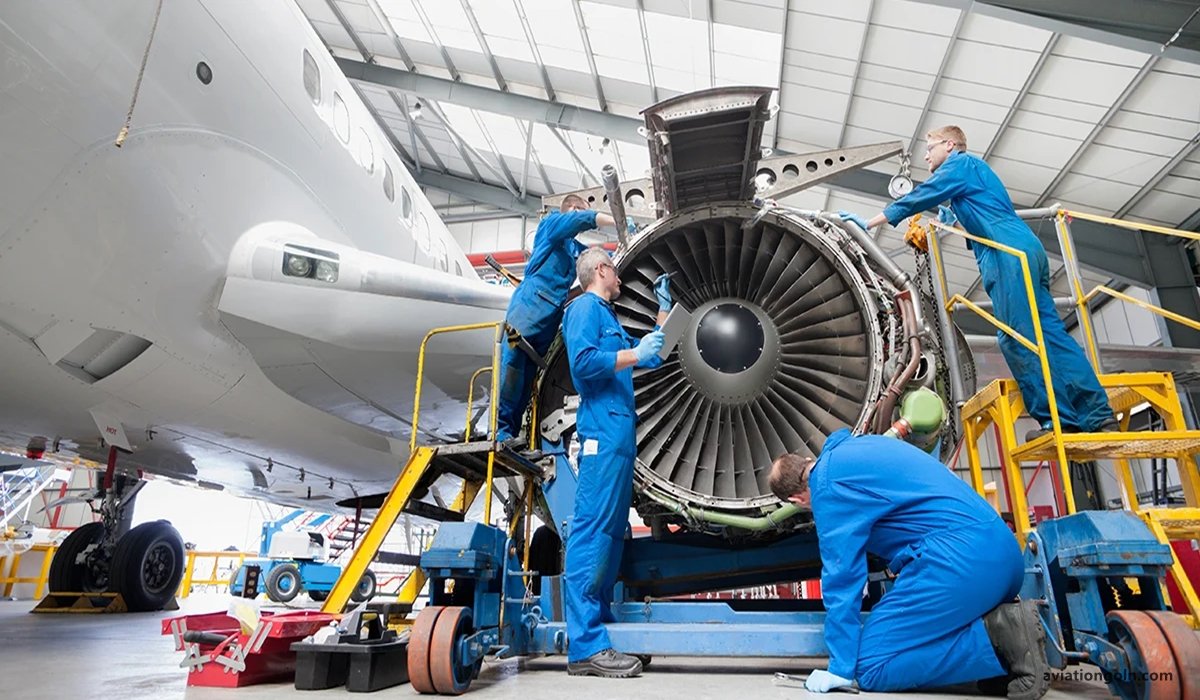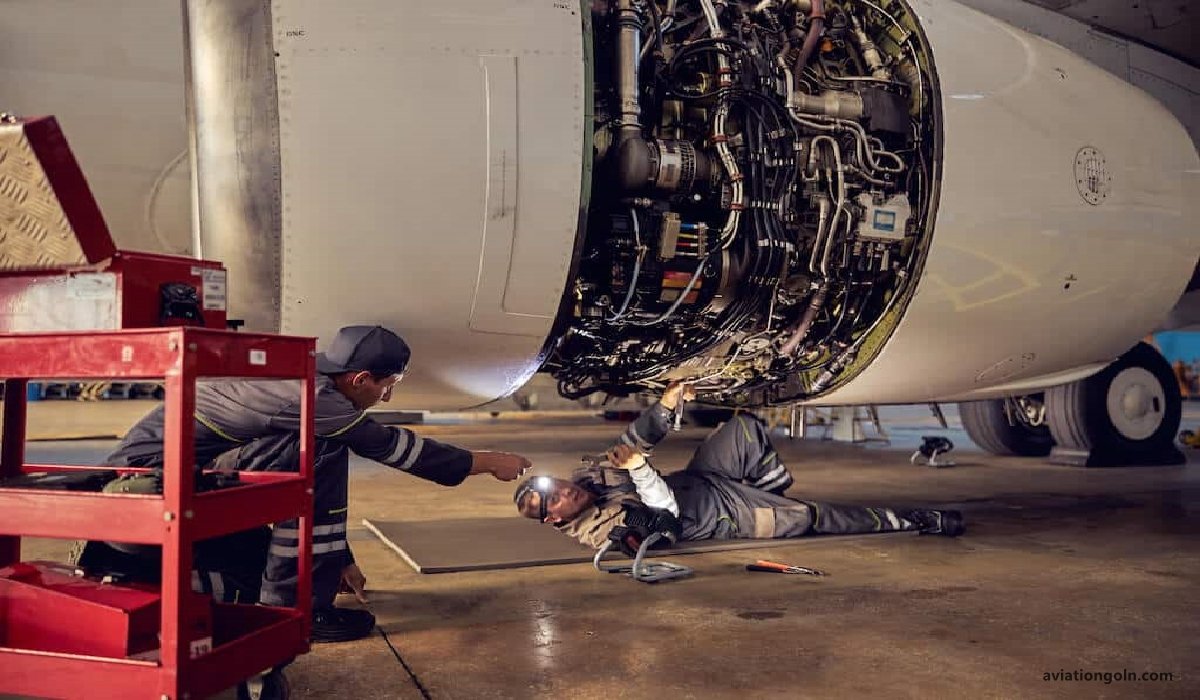The personnel licensing Of AME or Aircraft Maintenance Engineers (AME) is a critical aspect of aviation safety. Aircraft maintenance is a highly skilled profession that requires specialized training, knowledge, and experience to ensure the safety of the aircraft and its passengers. Therefore, it is essential to have a robust licensing system in place to ensure that only qualified personnel are allowed to maintain aircraft.
Personnel Licensing Of AME

The personnel licensing system for AMEs is regulated by various aviation authorities around the world, including the Federal Aviation Administration (FAA) in the United States and the European Aviation Safety Agency (EASA) in Europe. These authorities set standards for the training, experience, and knowledge required for AMEs to obtain and maintain their licenses.
To become an AME, candidates must undergo rigorous training and education that covers a broad range of topics related to aircraft maintenance. This includes topics such as airframe structures, powerplants, avionics, electrical systems, and more. After completing their training, candidates must pass a series of exams to demonstrate their knowledge and proficiency in these areas.
Once licensed, AMEs must continue to maintain their skills and knowledge through ongoing training and education. This ensures that they are up-to-date with the latest technologies and best practices in the industry. Many aviation authorities also require AMEs to complete a certain number of hours of practical experience each year to maintain their license.

The importance of personnel licensing for AMEs cannot be overstated. The safety of millions of passengers who fly every day depends on the competence and expertise of these professionals. Therefore, it is critical to ensure that only qualified and competent individuals are allowed to maintain aircraft. The licensing system helps to ensure this by setting high standards for education, training, and experience.
In addition to ensuring safety, the personnel licensing system for AMEs also provides benefits for the industry. By setting high standards for competence and expertise, the licensing system helps to promote professionalism and improve the overall quality of aircraft maintenance. This, in turn, helps to reduce maintenance costs and improve the efficiency of aircraft operations.
The personnel licensing of Aircraft Maintenance Engineers is an essential aspect of aviation safety. It ensures that only qualified and competent individuals are allowed to maintain aircraft, which is critical for the safety of passengers and the industry as a whole. The rigorous training, education, and ongoing professional development required for licensing helps to promote professionalism and improve the overall quality of aircraft maintenance. Therefore, it is crucial to continue to support and improve the personnel licensing system for AMEs.

Requirements of AME Licensing:
An Aircraft Maintenance Engineer (AME) is a skilled professional responsible for ensuring the safety and airworthiness of aircraft. In order to become an AME, one must obtain a license issued by the aviation regulatory authority in their country. The requirements for obtaining an AME license vary by country, but there are some common prerequisites that are necessary to become licensed.
Here are some of the key requirements for AME licensing:
- Education and Training: Most countries require a minimum of a high school diploma or equivalent education for entry into an AME program. However, some countries may require additional post-secondary education or training in aviation maintenance, engineering, or a related field. Some countries may also require applicants to complete an approved AME training program, which can take anywhere from 1 to 4 years to complete.
- Work Experience: In addition to formal education and training, many countries require AME candidates to have practical experience working in the aviation industry. This can range from a few months to several years, depending on the country and type of license being sought. Experience can be gained through apprenticeships, internships, or on-the-job training programs.
- Medical Certification: AMEs are responsible for ensuring the safety of aircraft and passengers, so it is essential that they are in good health. Most countries require AME candidates to pass a medical exam to obtain a license. The exam may include a physical examination, vision and hearing tests, and a drug and alcohol screening.
- Knowledge and Skills: AMEs must have a thorough understanding of aircraft maintenance and repair procedures, as well as the ability to diagnose and troubleshoot problems. Many countries require candidates to pass a series of written and practical exams to demonstrate their knowledge and skills. These exams may cover topics such as aircraft systems, maintenance procedures, and safety regulations.
- Background Checks: Because AMEs have access to sensitive equipment and information, many countries require candidates to undergo a background check before they can be licensed. This may include criminal history, credit history, and employment verification.
- Continuing Education: Once licensed, AMEs are required to complete ongoing training and education to stay current with new technologies and regulations. Many countries require AMEs to attend regular training sessions and complete a certain number of continuing education credits each year to maintain their license.
In summary, becoming an AME requires a combination of formal education, practical experience, and demonstrated knowledge and skills. Applicants must also meet medical and background check requirements and commit to ongoing training and education to maintain their license. The requirements for AME licensing vary by country, so it is important for candidates to research the specific requirements in their area before pursuing a career as an AME.

Educational requirement for Personnel Licensing Of AME:
Personnel Licensing of Aircraft Maintenance Engineers (AME) is regulated by aviation authorities around the world to ensure the safety and reliability of aircraft. The educational requirements for AME licensing vary depending on the country or region in which the license is sought. However, there are some common educational requirements that are typically necessary for obtaining an AME license.
First and foremost, a high school diploma or equivalent is usually required as a minimum educational requirement for obtaining an AME license. This is because a strong foundation in basic math, science, and technical skills is necessary for success in the aviation industry.
In addition to a high school diploma, many AME licensing programs require the completion of an approved aircraft maintenance training program. These training programs may be offered by universities, technical colleges, or specialized aviation schools. The curriculum typically includes both theoretical and practical instruction in areas such as aircraft systems, maintenance procedures, and safety protocols.
Furthermore, many countries require a specific number of practical work experience hours before granting an AME license. This requirement ensures that candidates have real-world experience in aircraft maintenance and are familiar with industry standards and best practices. The amount of required work experience varies depending on the jurisdiction and type of AME license being sought.
Finally, continuing education is often required to maintain an AME license. Aviation technology and best practices are constantly evolving, and it is essential for AMEs to stay up-to-date with the latest industry standards and techniques. Continuing education can take the form of workshops, seminars, and other professional development opportunities.
In conclusion, obtaining an AME license requires a combination of formal education, practical work experience, and ongoing professional development. These educational requirements ensure that AMEs have the knowledge and skills necessary to maintain aircraft safely and efficiently.
